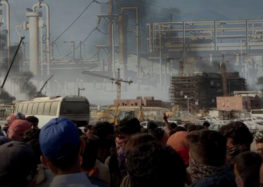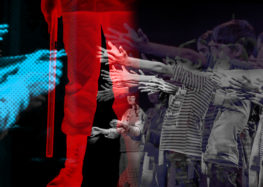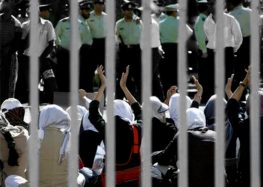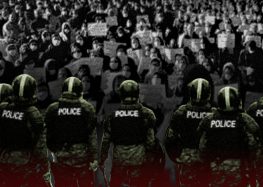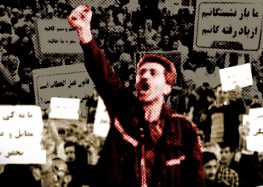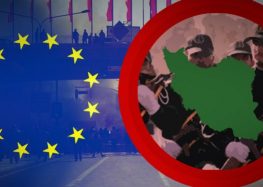Iran’s Economic Malaise from 1979–2012
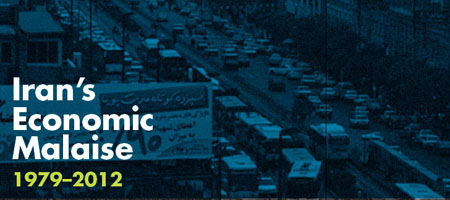 A Growing Crisis: The Impact of Sanctions and Regime Policies on Iranians’ Economic and Social Rights
A Growing Crisis: The Impact of Sanctions and Regime Policies on Iranians’ Economic and Social Rights
Iran’s Economic Malaise from 1979–2012
This section will assess the impact of sanctions on Iran’s economic performance and the socio-economic welfare of the Iranian people from the inception of the Islamic Republic (which roughly coincides with the initiation of the first set of US sanctions against Iran in November of 1979) to the imposition of American and European Union sanctions in 2012. It will argue that due to their unilateral and targeted nature, the costs of sanctions against Iran before 2005 were limited and generally marginal. During these years, the policies and practices of the Iranian government itself played a far more instrumental role in undermining the capacity of Iranians to promote their economic well-being.
With slightly more than 1 percent of the global population, Iran possesses at least 7 percent of the world’s mineral wealth, 10 percent of its petroleum reserves, and 16 percent of the planet’s natural gas deposits.[6] Iran possesses the second-largest known natural gas reserves and the third-largest petroleum deposits in the world. The combination of its natural gas and petroleum deposits makes Iran the world’s largest reserve holder of hydrocarbons. According to the World Bank, roughly 98 percent of Iranians between the ages of 15 and 24 are literate.[7] According to the Central Bank of Iran, the number of individuals with post-secondary degrees, which currently stands close to 9.5 million (out of a population of some 75 million), is increasing rapidly, with close to 3.5 million students presently enrolled in post-secondary institutions of higher learning.
In light of its enormous wealth of human and natural resources, entrepreneurial and youthful population, strategic location (apart from being the only country that connects the Caspian Basin to the Persian Gulf, Iran’s status as a neighbor to 15 land and sea countries and its position as a bridge between Europe, South Asia, the Caucasus, and Central Asia makes it an ideal north/south and east/west transit route),[8] and relatively advanced infrastructure, Iran is—and has been—ideally positioned to serve as a magnet for investments that could accelerate its economic take-off, transform the country into a locomotive for regional growth, and enhance substantially the socio-economic welfare of its population.
Regrettably, however, the country’s economic performance over the last 33 years has at best been sub-par. Iran’s GDP per capita reached its pre-revolutionary level only in 2007.[8] Other indicators of macro-economic performance have been similarly anemic, although the country has, since the revolution, performed better in terms of increasing the overall levels of life expectancy, literacy, and education. In the economic realm, however, Iran has stagnated. Since 1979, inflation and unemployment rates have almost never fallen to single digits,[10] while over-employment in the bloated public sector has proved stubbornly resilient and detracted from the nation’s capacity to increase economic growth and job creation in the private sector, the primary engine for economic development.[11] In the meantime, the nation’s business climate has consistently scored poorly in rankings by the World Bank, Freedom House (index on economic freedoms), and Transparency International, while levels of foreign direct investment that the country has managed to attract, especially outside of its oil and gas sector, have been miniscule.[12] In addition, according to the International Monetary Fund, at 150,000 emigrants per annum, Iran has one of the highest rates of brain drain in the world.
Prior to 2012, the primary causes behind such poor performance could be traced back to the structure of the Iranian economy and the policies espoused by the regime. To illustrate the point, this study will review and compare the impact of internally generated impediments (i.e. Iranian government policies) with external detriments (US, UN, and EU sanctions) on the performance of the Iranian economy over the last 33 years. For the sake of clarity, a simple classification scheme, corresponding to the Khomeini (1979-1989), Rafsanjani (1989-1997), Khatami (1997-2005), and Ahmadinejad (2005-present) periods, will be employed.
[6] Jahangir Amuzegar, “Iran’s 20 Year Economic Perspective: Promises and Pitfalls,” Middle East Policy, Volume 16, No. 3, September 2009.
[7] “Literacy Rate; Youth Total,” Trading Economics, http://www.tradingeconomics.com/iran/literacy-rate-youth-total-percent-of-people-ages-15-24-wb-data.html.
[8] Ibid.
[9] Hossein Askari, “Iran’s Economic Policy Dilemma,” International Journal, Vol. 59, No. 3, Summer 2004. See also Hossein Askari, “Iran’s Economic Vulnerability: Self-Inflicted, Not Sanction-Driven,” isideIRAN.org, November 10, 2009, http://www.insideiran.org/news/iran%E2%80%99s-economic-vulnerability-self-inflicted-not-sanction-driven/.
[10] “Except for a few years of strict wage and price controls during the Iran-Iraq War, [inflation] has steadily registered double-digits.” Jahangir Amuzegar, “Iran’s Economy in Turmoil,” International Economic Bulletin—Carnegie Endowment for International Peace, March 18, 2010, http://carnegieendowment.org/2010/03/18/iran-s-economy-in-turmoil/3zgx.
[11] Askari, “Iran’s Economic Policy Dilemma,” International Journal, 2004.
[12] Amuzegar, “Iran’s 20 Year Economic Perspective: Promises and Pitfalls,” Middle East Policy. See also Askari, “Iran’s Economic Policy Dilemma,” International Journal, 2004.

